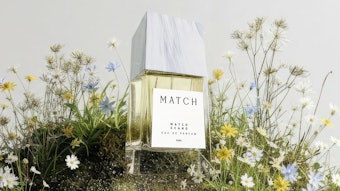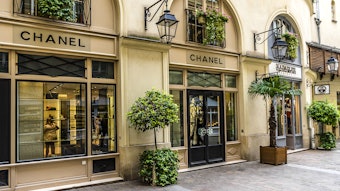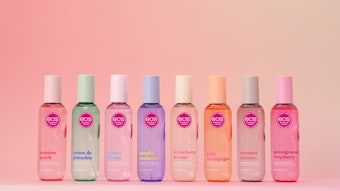Courtesy of Perfumer & Flavorist magazine.
Karyn Khoury will speak as part of a panel at the World Perfumery Congress in Cannes, France, June 1–4, 2010. For more information, visit www.worldperfumerycongress.com. Read an exclusive interview with Khoury online at www.perfumerflavorist.com/events/coverage.
"This isn’t a quick fix situation,” says Karyn Khoury, senior vice president at Estée Lauder, discussing the fine fragrance industry’s declining sales. “It took us many years to get to the situation we’re in. It’s not going to be a matter of months before we fix it, but I believe that we can and will fix it.”
In 2009, the industry launched fewer scents than it did in 2008, breaking a long streak of exponential growth. To Khoury’s thinking, this is a positive result of the financial crisis of the last 18 months. “The consumer has been overwhelmed with the number of launches, the amount of choice, and in some cases the lack of differentiation,” she says. This excess of new scents has coincided with a decline in the number of consumers buying fragrance. Khoury hopes a smaller pool of launches will feature more discerning character and “help us reconnect with the consumer.” She adds that the consumer’s experience with fine fragrance must be thought through in every aspect, from the juice to the bottle to the instore environment: “It’s a feel-good factor that has to be there in every element of the way in which we approach a consumer.”
Fragrances for the Changing Consumer
“Whatever affects the consumer’s emotions, affects the outlook, the approach, and ultimately the business of fragrance,” says Khoury. As a result of recent economic uncertainty, she says, “we’ve seen an increased demand … for authenticity, craftsmanship (quality), the true story behind the fragrance.” Consumers, she continues, are seeking a more emotional connection—an “emotional payback”—from their fragrance purchases. This, she says, is a “guiding principal for 2010.” Khoury adds, “Launches, if they have any chance of connecting with the consumer, must be well thought out, cohesive in the message, package, communication and scent.” Making these connections, she says, is all about achieving an “‘I absolutely gotta have it’ response. It’s what makes you buy a handbag you don’t need—it’s this emotional ‘I want it.’”
But what does this mean for fragrance houses and perfumers? To start, says Khoury, the consumer has unprecedented power, requiring consumer insight for both formulations and messaging. “That’s very different than looking to the consumer to tell you what to do and how to do it. We need to find ways to understand this very volatile consumer, whose emotions are changing almost as rapidly as the economic situation. We need to understand what’s important to them, what connects to them, what certain words that we use all the time truly mean to them—what is ‘modern,’ what is ‘emotional,’ what is ‘reinforcing’? What do those words really mean to them?” This process will require fragrance houses and marketers to display leadership in creativity. “And then,” she concludes, “we need to deliver a compelling, pleasurable, reinforcing product.”
In working with her fragrance house partners, Khoury says, “I am looking to understand what olfactive elements and notes are really resonating with the emotional mood of the consumer.” For instance, she says, the recent launch of Private Collection Jasmine White Moss portends a resurgence in green notes— contemporized versions of earthy, galbanumlike notes or fresh facets. “They remind people of nature,” says Khoury. “They also have, depending how they’re done, an almost iconic updated retro feel that I think is going to be very meaningful to people.” The sensuality famously embodied by Sensuous, she adds, serves as another area ripe for new interpretations both in positioning messages and olfactive creations.
Considering that some olfactive boundaries were stretched in 2009, wonders Khoury, “How much farther can we take it?” She also foresees the exploration of new orientals that go beyond the classics and gourmands, which present reinterpreted structures that smell modern—“a juxtaposition of modernity and a retro feel that speaks to quality and history.”
“People are going to need happy things in their life,” says Khoury, “something that makes them smile, that’s positive.” She predicts growing use of optimistic themes in concepts and fragrances ahead, similar to those achieved in the classic Happy. Olfactively, Khoury says, these impressions may be embodied by the aforementioned green notes or even citrus notes. “You’ll see those fruity aspects being played with in the floral category as a way to express positivity and optimism.”
The Future
As for where she expects to find the industry by mid- 2010, Khoury says, “My hope and my sense is the conversation will be different in that we will have taken some of the initial steps … in terms of finding new ways to reach out to the consumer. Hopefully you’ll start to see some of that in in-store experiences, visual communications … and possibly in the introductions that come out between now and then. I think you’ll see the beginnings of this approach, but I think we’ll very much be in an evolutionary state.”










